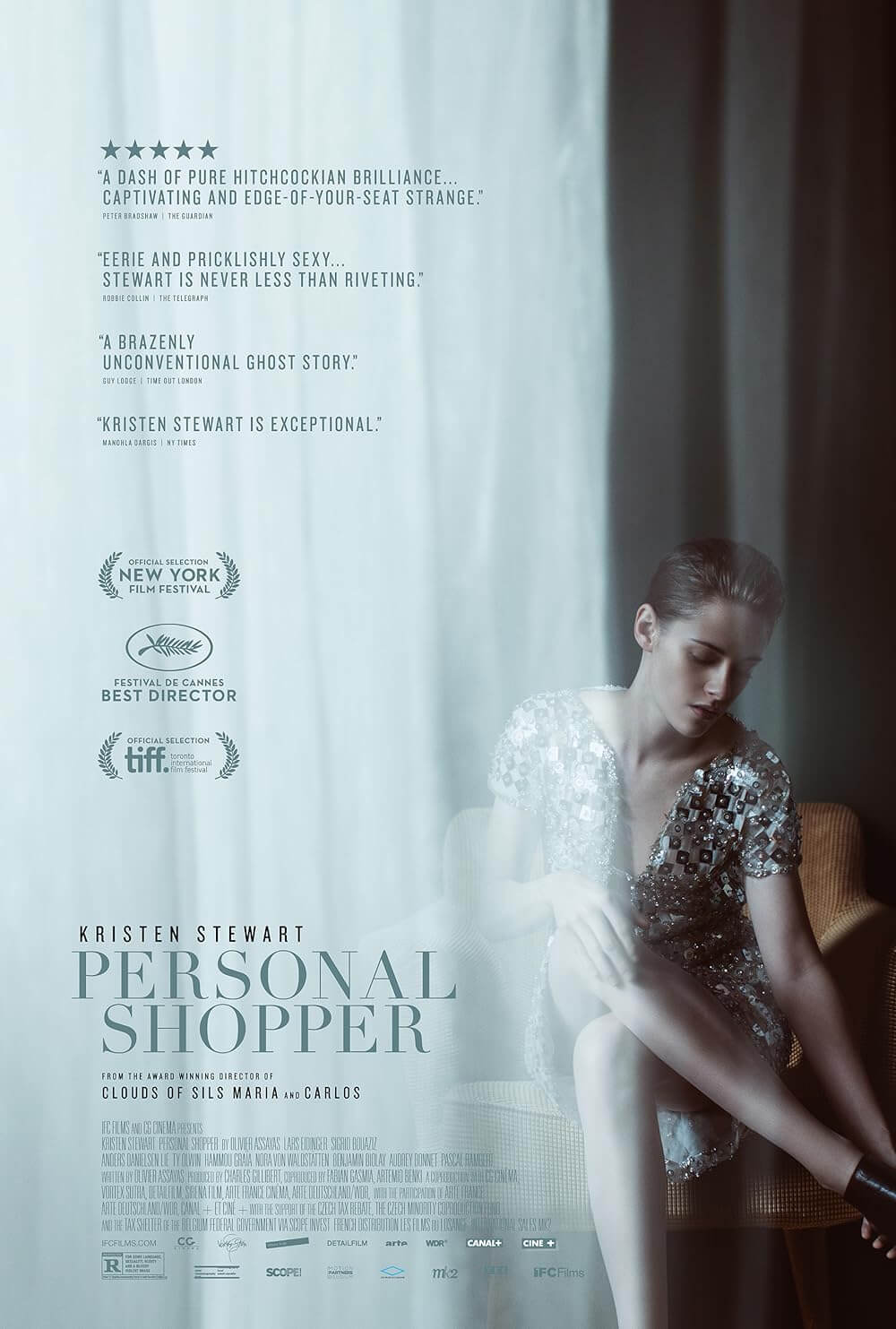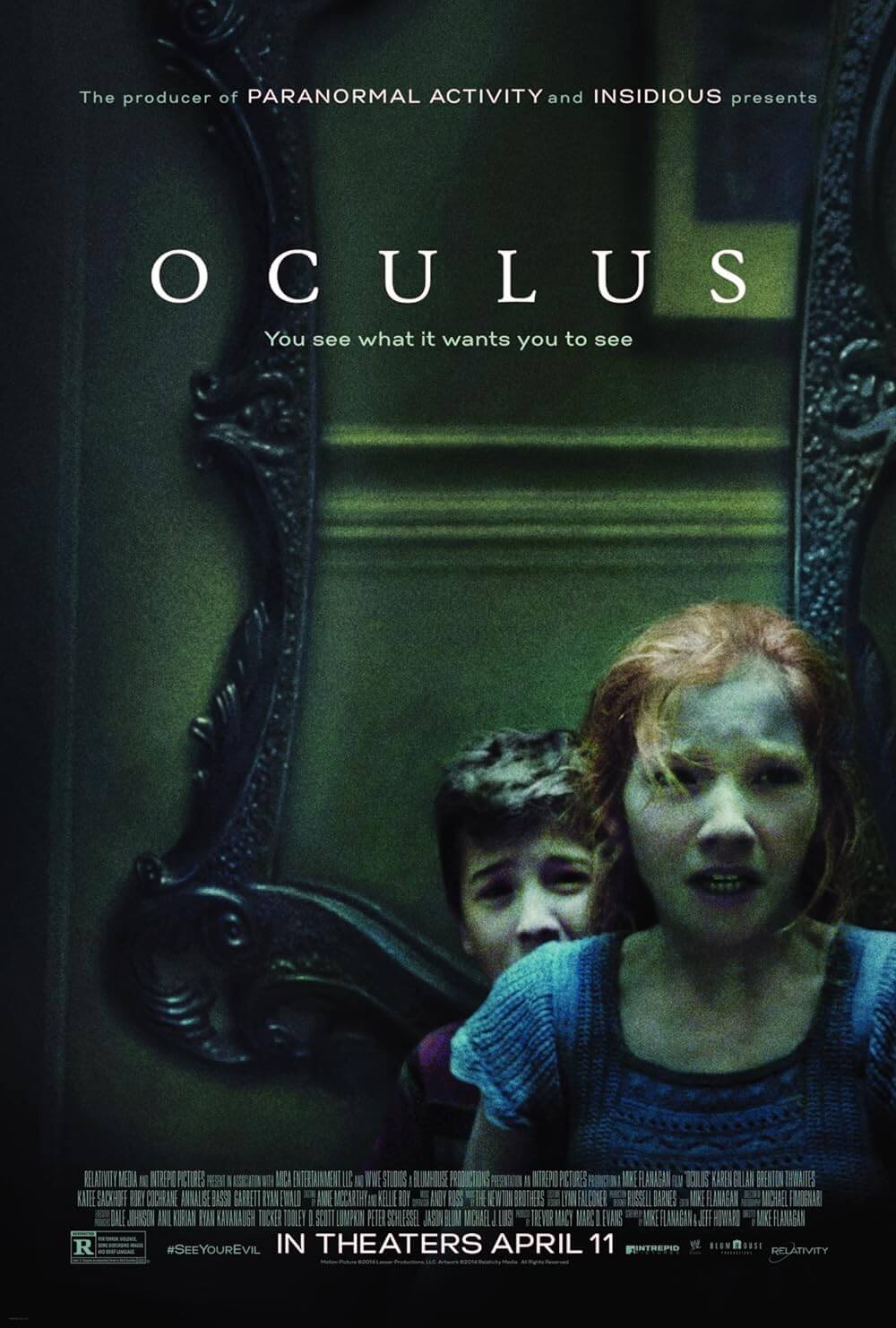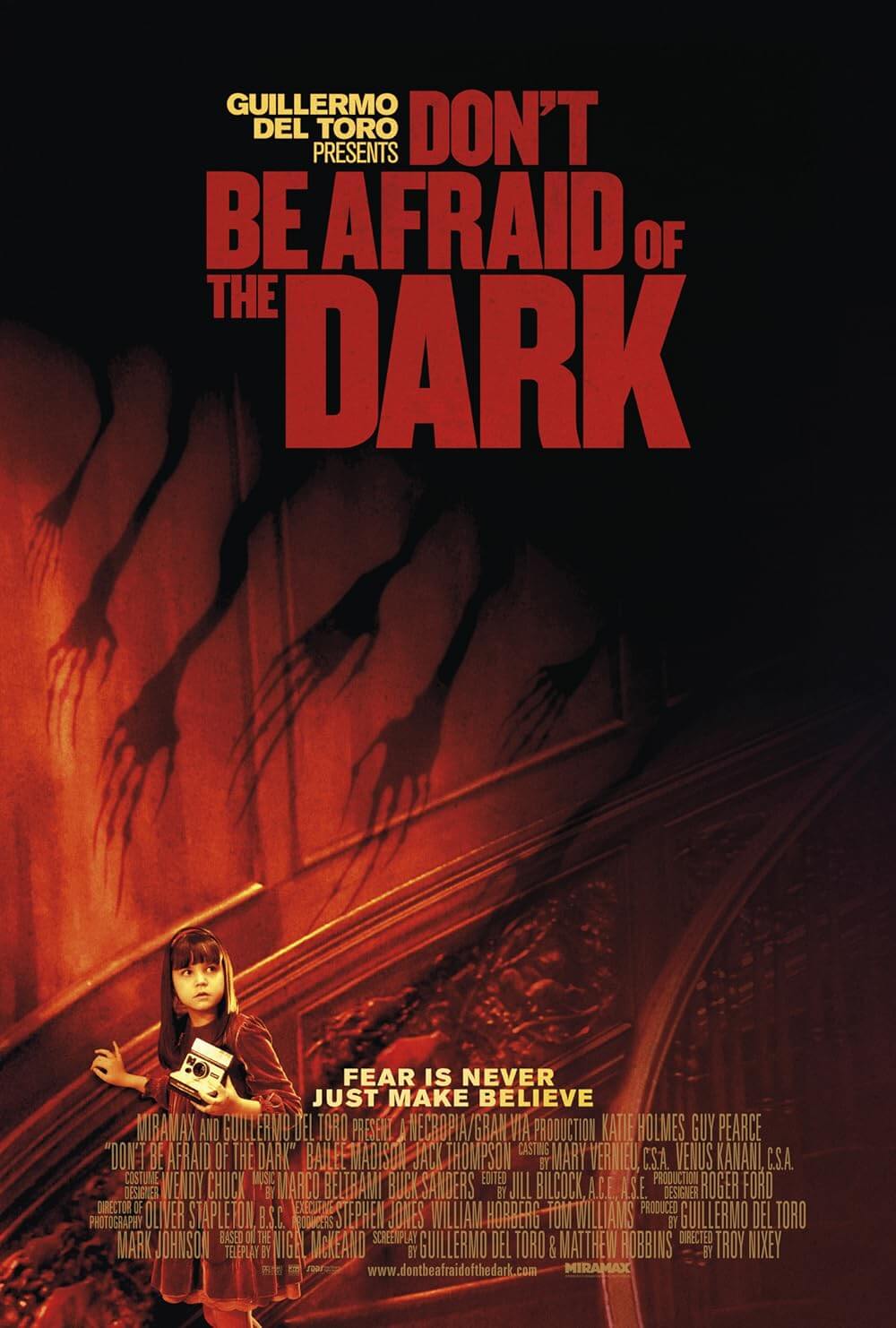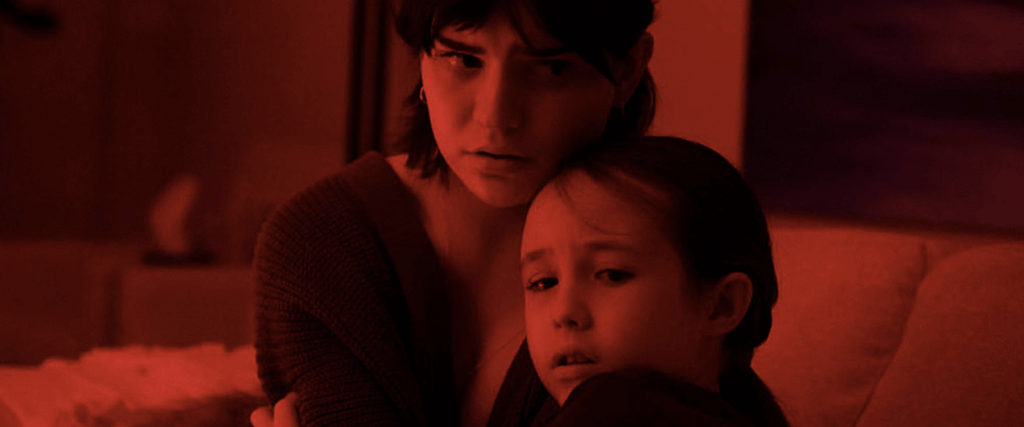
The Boogeyman
By Brian Eggert |
Against all good sense or reason, The Boogeyman will scare you. That’s what it’s designed to do. The movie exploits our primal fears, even as its characters make one frustrating, if not downright stupid, decision after another. It’s a horror story about things that go bump in the night, the creature lurking under the bed, the monster in the closet, and our innate fear of the dark. Loosely based on the 1973 short story by Stephen King, the movie draws from a catch-all mythology deployed to frighten children for centuries. Stay in bed, or the Boogeyman will get you. Behave, or the Boogeyman will know. Who comes out on Halloween night? The Boogeyman. The new movie suggests a physical manifestation of those superstitions. As one character describes it, “The thing that comes for your kids when you’re not paying attention.” Folkloric origins aside, The Boogeyman is one of those horror movies where characters seem allergic to light, even though it should be a protective shield. Assuming you can accept that the movie requires the characters to behave irrationally, you’re bound to have a spooky good time.
The Boogeyman also marks a shift for its director, Rob Savage, who became someone to watch after creating one of the first (and best) pandemic movies. Shot during the COVID-19 lockdown, Savage’s Host (2020) is a microbudget found footage yarn about a few friends who perform a séance on a Zoom call, only to find themselves haunted by a malicious force they unleashed. The British director demonstrates how much he can accomplish with $100,000 and a few friends, all recording from inside their homes. He then signed with Blumhouse to direct Dashcam (2021), another found footage movie, this one a misguided effort about an annoying vlogger whose intolerant right-wing rhetoric never stops, not even when occultist zombies chase her. But Savage’s latest takes him out of the realm of handheld cameras, improvisational performances, and erratic editing for a more straightforward supernatural chiller.
King’s story, included in his Night Shift collection, was adapted by Mark Heyman (Black Swan, 2010), along with Scott Beck and Bryan Woods, the duo behind A Quiet Place (2018) and Haunt (2019). Their version uses the story as a launchpad for a commonplace situation in horror cinema today, where characters work through their grief by confronting their symbolic monsters. After his wife dies in an accident, Will Harper (Chris Messina), a psychiatrist, tries to return to normalcy with his two daughters, the teenage Sadie (Sophie Thatcher, excellent in 2018’s Prospect) and the much younger Sawyer (Vivien Lyra Blair). Although Will can speak with his patients about their complex emotional situations, he cannot bring himself to talk to his daughters about their late mother. Fortunately, the family is haunted by a malevolent beast that has targeted them, allowing everyone to work through their emotional baggage and strengthen their bonds by the end.
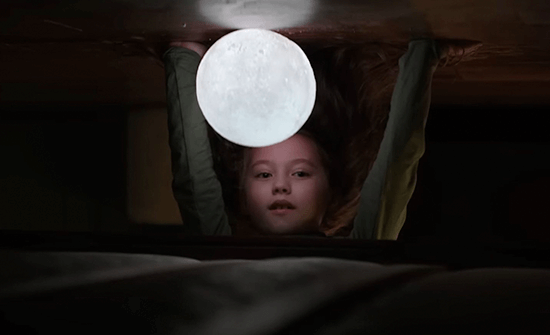 But before any of that occurs, a disturbed man named Lester Billings (David Dastmalchian) seeks out Will, hoping to talk about the death of his three children, all of whom died in the span of a year. The police think he’s responsible, but Lester blames the Boogeyman—a monster that thrives in the dark and feeds on “susceptible” children. Lester’s visit seems to pass on the Boogeyman to the Harpers like a disease. From that moment onward, a creature inhabits every shadow of the Harpers’ home, waiting to attack, appearing and disappearing at will. Sawyer feels its presence first, then Sadie. Eventually, the elder sister attempts to investigate Sawyer’s claims of a monster by visiting Lester’s disturbingly unkempt, seemingly abandoned home to get his wife Rita’s (Marin Ireland) perspective, only to uncover a nightmarish reality. But Sadie’s search for answers about the Boogeyman seems secondary to her grief, and her unsympathetic classmates don’t make Sadie’s healing process any easier. Of course, Will, the resident head-shrinker, predictably rationalizes to frustrating degrees, claiming his children’s mounting terror is part of the mourning process.
But before any of that occurs, a disturbed man named Lester Billings (David Dastmalchian) seeks out Will, hoping to talk about the death of his three children, all of whom died in the span of a year. The police think he’s responsible, but Lester blames the Boogeyman—a monster that thrives in the dark and feeds on “susceptible” children. Lester’s visit seems to pass on the Boogeyman to the Harpers like a disease. From that moment onward, a creature inhabits every shadow of the Harpers’ home, waiting to attack, appearing and disappearing at will. Sawyer feels its presence first, then Sadie. Eventually, the elder sister attempts to investigate Sawyer’s claims of a monster by visiting Lester’s disturbingly unkempt, seemingly abandoned home to get his wife Rita’s (Marin Ireland) perspective, only to uncover a nightmarish reality. But Sadie’s search for answers about the Boogeyman seems secondary to her grief, and her unsympathetic classmates don’t make Sadie’s healing process any easier. Of course, Will, the resident head-shrinker, predictably rationalizes to frustrating degrees, claiming his children’s mounting terror is part of the mourning process.
Savage plays it smart by keeping the monster obscured and in the shadows, at least until the climactic showdown, when audiences will get a better look (think the insectoid aliens from A Quiet Place, except with a memorably terrifying mouth feature). Until then, we see glowing eyes and mysterious shapes moving in the dark. The creature also mimics the voices of Sawyer and Sadie’s loved ones—albeit with a growling undertone beneath its voice, reminiscent of the shrieking bear from Annihilation (2018)—tricking them into exploring in the night to find the familiar voice. Alas, for people stalked by a monster that thrives in the dark, the Harpers spend a lot of time walking around at night with the lights off. They never grab a flashlight, turn to their smartphone’s flashlight app, and seldom reach for a light switch. Even after a few close encounters with the Boogeyman, Sawyer resolves to play video games one night in the dark, illuminated only by the television’s glow. However insane the characters’ behavior, at least cinematographer Eli Born strikes a balance between dark scenes and clarity, a feat many filmmakers fail to achieve, and delivers a cohesive presentation of dreadful darkness that serves the scares well.
Some viewers may lose patience with the movie’s characters and their inconceivable aversion to light. The Boogeyman becomes one of those yell-at-the-screen movies where their behaviors defy all rationality except the logic of a horror movie, but we want to shout at them because the movie has made us care—so at least it’s not a passive viewing experience. It recalls Sinister (2012) and last year’s Smile in that respect, prompting questions afterward about why this or that happened. Trying to answer these questions will probably lead to the outcome that The Boogeyman has several holes and problems on the script level. Despite itself, the movie is also very scary stuff, and the trio of lead actors sell the proceedings. Savage delivers a tense mood of mounting terror that follows Sadie and Sawyer on slow, excruciating ventures into the dark, often leading to freaky imagery or armrest-grabbing thrills. The material preys on our lizard-brained fear of the dark. And when the monster in the shadows reaches out and tries to eat us, we cannot help but react as intended. On those terms, it does the trick.
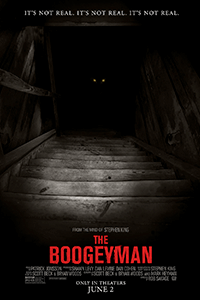
If You Value Independent Film Criticism, Support It
Quality written film criticism is becoming increasingly rare. If the writing here has enriched your experience with movies, consider giving back through Patreon. Your support makes future reviews and essays possible, while providing you with exclusive access to original work and a dedicated community of readers. Consider making a one-time donation, joining Patreon, or showing your support in other ways.
Thanks for reading!
Brian Eggert | Critic, Founder
Deep Focus Review


